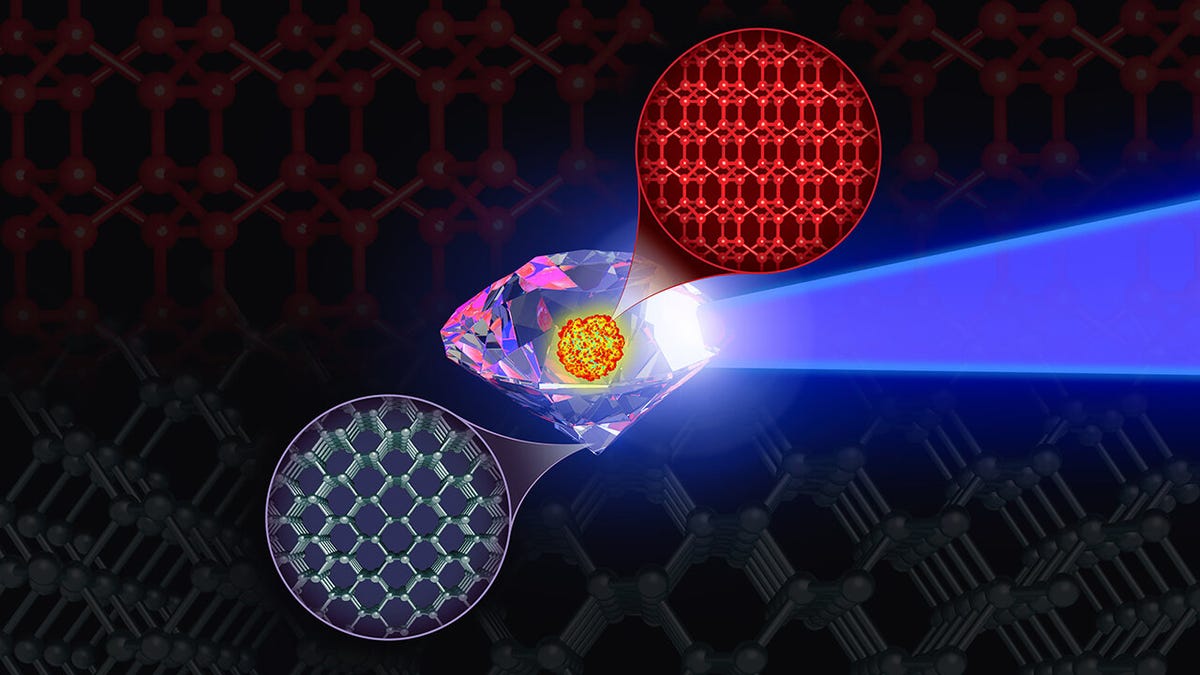Diamonds are the hardest naturally occurring material on Earth, but a supercomputer just modeled stuff that’s even harder. Called a ‘super-diamond,’ the theoretical material could exist beyond our planet—and maybe, one day, be created here on Earth.
How Important Was it for Jason Reitman to be a Part of Ghostbusters: Frozen Empire?
Like normal diamonds, super-diamonds are made from carbon atoms. This specific phase of carbon, composed of eight atoms, should be stable at ambient conditions. In other words, it could exist in an Earth laboratory.
The specific phase, called BC8, is a high-pressure phase typically found in silicon and germanium. And as the new model suggests, carbon can also exist in this particular phase.
Frontier—the fastest and first exascale supercomputer—modeled the evolution of billions of carbon atoms put under immense pressures. The supercomputer predicted that BC8 carbon is 30% more resistant to compression than plain ol’ diamonds. The team’s research describing the super-hard stuff was recently published in The Journal of Physical Chemistry Letters.
“Despite numerous efforts to synthesize this elusive carbon crystalline phase, including previous National Ignition Facility (NIF) campaigns, it has yet to be observed,” said study co-author Marius Millot, a researcher at Lawrence Livermore National Laboratory (LLNL), in a laboratory release. “But we believe it may exist in carbon-rich exoplanets.”
It’s not the first potential evidence of ultra-hard materials existing in the depths of space. In 2022, a team of researchers found evidence that lonsdaleite—a rare form of diamond—can exist in meteorite fragments that fall to Earth.
Space-based observatories like the Webb Space Telescope are revealing carbon-rich exoplanets like never before. Beyond Webb, NASA has plans for the Habitable Worlds Observatory, a next-generation space telescope that could be operational by the early 2040s.
But scientists—reasonably—aren’t waiting to get a better look at such distant worlds, especially since super-diamonds would only form in extremely high-pressure environments; that is to say, at the cores of these exoplanets.
“The extreme conditions prevailing within these carbon-rich exoplanets may give rise to structural forms of carbon such as diamond and BC8,” said Ivan Oleynik, a physicist at the University of South Florida and senior author of the paper, in the same release. “Therefore, an in-depth understanding of the properties of the BC8 carbon phase becomes critical for the development of accurate interior models of these exoplanets.”
It may be possible to grow such super-diamonds in the lab environment. Eventually. However, to achieve this, the team must first explore what’s possible through LLNL’s National Ignition Facility (NIF), the same facility that achieved net energy gain in a fusion reaction in 2022, and again last year.
That research will be done through NIF’s Discovery Science program. So when it comes to lab-grown super-diamonds, my advice is to not hold your breath. But things could be heating up in materials science.
More: Nuclear Fusion Scientists Successfully Recreate Net Energy Gain
